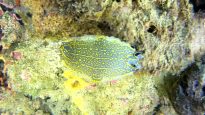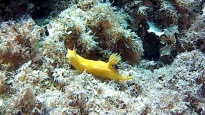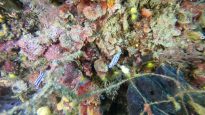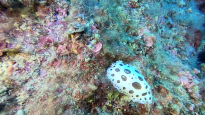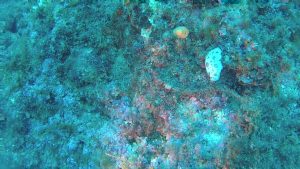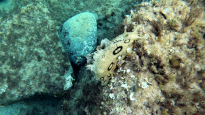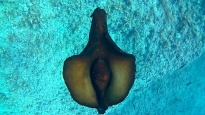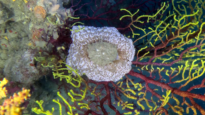Nudibranchi - Nudibranchia
nudibranchs mollusks Opisthobranchia nudibranchia nudibranchi molluschi intotheblue.it
Doride dipinto - Felimare picta
Doride giallo - Baptodoris cinnabarina
Doride tricolore - Felimare tricolor
Dotted sea slug - Peltodoris atromaculata - Discodoris atromaculata
Jorunna funebris - Nudibranchs
Lepre di mare dagli Anelli - Aplysia dactylomela
Sea hare - Aplysia depilans
Umbraculum mediterraneum – Umbraculum umbraculum
The nudibranchs (Nudibranch (Blainville, 1814)) are a suborder of mollusks of the order Opisthobranchia, which includes more than 7000 species described. The word nudibranch comes from the Latin nudus (nude) and the Greek word brankhia (gill), and means with the bare gills.

Distribution and habitat
They can be found all over the world at all depths, even though most species live in warm, shallow waters, although species have also been found in the Antarctic seas.
Description
Nudibranchs have a soft and flexible body. The adult form has no shell, which is lost during the very first vital period, at the end of planktonic life, nor do they have operculum.
The shapes and colors can vary enormously, the dimensions vary from 1 to 60 centimeters. Among the nudibranches you can find the most colorful creatures on Earth.
They are typically benthic animals (although some, like the Spanish dancer, can swim through body movements and others, such as Glaucus atlanticus, lead pelagic life by floating thanks to a bubble of air supported by modified waxes), they have all of the chemoreceptors on the nape, called rhinophores, used as sensory organs. Sometimes they have waxed on the body, small protuberances of the digestive system also used for breathing.
The evolutionary adaptation of the nudibranchs has led to a huge variety of shapes and colors, both for mimetic and defensive purposes.

Biology
Reproduction. Spawning of ribbon eggs. They are hermaphrodite animals, but can not self-fertilize.
Reproduction takes place via internal sex, through copulation. Typically they lay eggs in gelatinous spirals or in web-like veils, often near or over their food prey. The development of the individual takes place in the egg, which leaves it in a larval form, called a veliger and with eyelashes, which practices a short planktonic life and then loses the shell and starts the benthic life.
Supply They are carnivorous animals; some feed on sponges, hydrozoans, bryozoans, others are cannibals, feeding on other opistobranchs or nudibranchs of the same species. Others still feed on tunicates, crustaceans or even dead fish.
Defense mechanisms Because of the loss of the external shell they had to develop, through evolution, other protection systems: in particular the camouflage through colors that make them invisible, such as the Phyllodesmium longicirra or the Melibe mirifica, or through colorations that identify them as non-edible or poisonous (aposematism), such as Hypselodoris infucata.

https://it.wikipedia.org/wiki/Nudibranchia
https://en.wikipedia.org/wiki/Nudibranch

